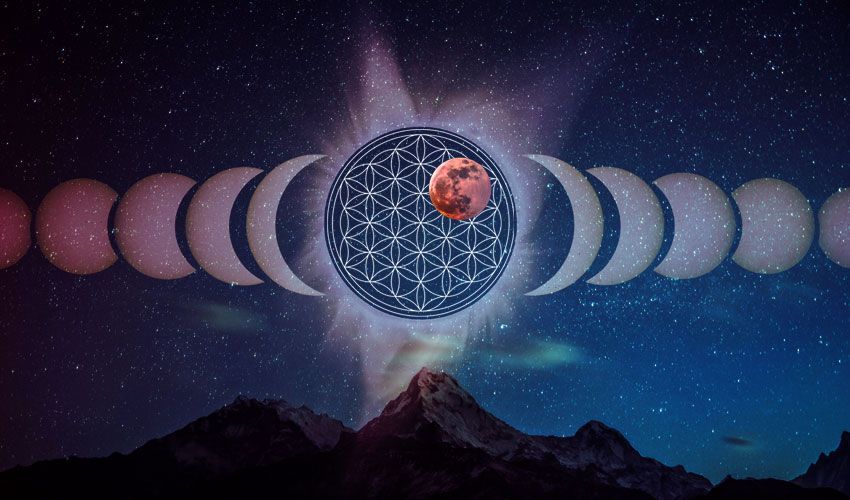The Flower of Life: Mysteries of Sacred Geometry
In the depths of ancient wisdom lies a symbol of unparalleled beauty and significance – the Flower of Life. Spanning across cultures and civilisations, this intricate pattern holds within its symmetrical petals the secrets of creation, the universe, and the very essence of existence itself. From the temples of ancient Egypt to the sacred sites of India, the Flower of Life has captivated the minds of mystics, philosophers, and seekers of truth for millennia.
I have seriously enjoyed my research for this one and I must say, through my research I have been captivated by this symbol and other musings of mine just so happen to now make more sense. Such as the spiritual significance of shapes, such as circles! (I host women’s circles!) But in its simplest form, this beautiful geometric symbol contains 19 overlapping circles contained in 1 big unifying circle, and the overlapping circles intersect, forming the appearance of flower petals – hence the name, The Flower of Life. But what really does the Flower of Life represent, and why should we be talking, thinking and contemplating this topic? Based on my findings, I believe it deserves our time and attention. Let’s talk a bit more about it.

The Flower of Life
There really is some deep rooted symbolism behind this captivating image. Some say it’s representative of the union of the sacred Masculine and the Divine Feminine, the connectedness of all living things, and others see it as the cycle of life, death and rebirth. Let’s explore the depths of the topic.
Origins & Symbolism
The origins of the Flower of Life trace back to the dawn of civilisation, where it is believed to have emerged as a symbol of cosmic order and divine harmony. Its precise origins are shrouded in mystery, with some attributing its creation to ancient cultures such as the Egyptians, where it was found in the temple of Osiris and said to contain a ‘secret code’ (underpinning the basic building blocks of the universe), and also the Sumerians, and the Greeks.
At its core, the Flower of Life is composed of multiple evenly-spaced, overlapping circles, forming a mesmerising geometric pattern reminiscent of a flower in full bloom. Within this pattern lies a myriad of geometric shapes, including triangles, hexagons, and pentagons, each imbued with its own symbolic significance.
The Flower of Life is often associated with sacred geometry, a branch of mathematics concerned with the study of geometric forms and their spiritual, philosophical, and symbolic meanings. It is believed to represent the interconnectedness of all living beings, the fundamental unity of existence, and the underlying order of the universe.
Spiritual Significance
In spiritual traditions around the world, the Flower of Life holds profound significance as a symbol of creation and interconnectedness. It is often regarded as a visual representation of the divine blueprint of the cosmos, with each circle representing a stage in the process of creation.
Within the Flower of Life, one can find various sacred symbols, including the Seed of Life, the Tree of Life, all 7 Chakra systems, and the Metatron's Cube, each carrying its own symbolic meaning and spiritual power. These symbols are believed to hold the keys to unlocking higher states of consciousness, facilitating spiritual growth, and connecting with the universal source of energy and wisdom.
Healing & Transformation
Beyond its spiritual significance, the Flower of Life is also associated with healing and transformation. It is believed that meditating upon the pattern of the Flower of Life can help to harmonise the mind, body, and spirit, promoting health, balance, and inner peace.
In recent years, the Flower of Life has experienced a resurgence in popularity, with many people incorporating its imagery into their spiritual practices, artwork, and jewellery. Its intricate beauty and profound symbolism continue to inspire awe and fascination, serving as a potent reminder of the interconnectedness of all things and the infinite possibilities that lie within the universe.
Modern Interpretations
In the modern era, scientists, mathematicians, and artists have continued to explore the mysteries of the Flower of Life, uncovering new insights into its geometric properties and mathematical significance. Through computer simulations and mathematical algorithms, researchers have gained a deeper understanding of the complex patterns and symmetries inherent in the Flower of Life, shedding light on its underlying principles of order and harmony.
Furthermore, the Flower of Life has found its way into various fields beyond spirituality and art, including architecture, design, and technology. Its geometric principles have been applied in the construction of sacred buildings, the development of advanced engineering techniques, and the design of innovative products and structures.

Spiritual Significance of Circles
The circle holds significant spiritual symbolism across various cultures and belief systems. I am in absolute awe of this particular shape and its spiritual significance. Here are some of the key spiritual meanings associated with the shape of a circle:
Wholeness & Unity: One of the primary spiritual meanings of the circle is its representation of wholeness and unity. Unlike other shapes with distinct endpoints, the circle has no beginning or end, symbolising completeness and the interconnectedness of all things. It represents the eternal and cyclical nature of life, death, and rebirth.
Eternity & Infinity: The unbroken continuity of the circle suggests eternity and infinity. It transcends time and space, signifying the timeless nature of existence and the infinite cycles of the universe.
Divine & Cosmic: In many spiritual traditions, the circle is seen as a divine or cosmic symbol. It reflects the divine perfection and harmony found in the natural world and the cosmos. Some cultures associate the circle with the sun, the moon, or other celestial bodies, representing the divine order and cosmic balance.
Balance & Harmony: The symmetrical nature of the circle conveys a sense of balance and harmony. It symbolises the equilibrium between opposing forces and the interconnectedness of dualities such as light and dark, male and female, and yin and yang.
Protection & Enclosure: Circles have been used in various spiritual practices as symbols of protection and containment. They create a boundary between the sacred and the profane, serving as a sacred space for rituals, ceremonies, and meditative practices. Mandalas, intricate geometric designs often drawn in circular form, are used in Hinduism and Buddhism as aids to meditation and spiritual contemplation.
Cycles of Nature: The circle represents the cyclical patterns found in nature, such as the seasons, the phases of the moon, and the cycles of birth, growth, decay, and regeneration. It reminds us of the interconnectedness of all living beings and the natural rhythms of life.
Overall, the circle is a powerful symbol in spirituality, representing unity, wholeness, eternity, balance, and the interconnectedness of all things. Its simplicity and universality make it a potent symbol across cultures and throughout human history.

Sacred Geometry
Sacred geometry is a term used to describe the belief that certain geometric shapes and proportions have inherent spiritual significance and symbolic meanings. It is a concept that has been present in various cultures and spiritual traditions throughout history, including ancient Egypt, Greece, China, India, and the Islamic world, among others. The fundamental idea behind sacred geometry is that certain geometric forms and ratios are fundamental to the structure of the universe and hold profound symbolic and metaphysical meanings. These geometric shapes are believed to embody divine principles and cosmic order, serving as a bridge between the physical and spiritual realms. Some of the key elements and concepts within sacred geometry include:
- Geometric Shapes: Certain geometric shapes, such as the circle, square, triangle, and hexagon, are considered to be particularly significant. These shapes are often believed to represent fundamental aspects of creation and existence.
- Proportions & Ratios: Sacred geometry places importance on specific proportions and ratios, such as the golden ratio (Phi), the Fibonacci sequence, and the ratios found in the geometry of the human body and natural forms. These ratios are believed to reflect the underlying order and harmony of the cosmos.
- Symbols & Patterns: Sacred geometry often involves the use of symbols and patterns derived from geometric shapes, such as the Flower of Life, the Seed of Life, the Vesica Piscis, and the Sri Yantra. These symbols are used in spiritual practices, meditation, and art to access higher states of consciousness and connect with the divine.
- Cosmic Principles: Sacred geometry is based on the belief that the geometric forms and patterns found in the natural world and the cosmos are not random but are instead expressions of underlying cosmic principles and universal laws. By studying and understanding these geometric patterns, practitioners seek to gain insight into the nature of reality and their place within it.
- Spiritual Significance: Sacred geometry is often associated with spirituality, mysticism, and esotericism. It is believed to offer a means of understanding the divine order of the universe and unlocking hidden knowledge about the nature of existence, consciousness, and the soul.
Overall, sacred geometry is a multifaceted concept that encompasses a wide range of beliefs, practices, and interpretations. It serves as a framework for exploring the interconnectedness of all things and the underlying unity of the physical and spiritual dimensions of reality.
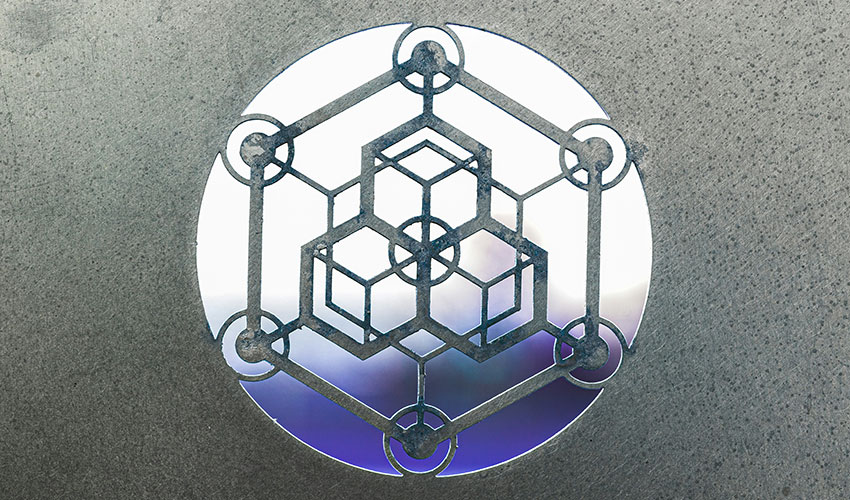
Dr Masaru & His Theories
Dr. Masaru Emoto was a Japanese author and researcher known for his pioneering work on the effects of consciousness on water. Through his groundbreaking experiments and observations, Emoto proposed that human consciousness could have a profound impact on the molecular structure of water, leading to changes in its physical properties and crystalline formations.
Theories & Experiments
Emoto's research centred around the idea that water is not just a passive substance, but rather a dynamic medium that can be influenced by external factors, including thoughts, emotions, and intentions. He conducted a series of experiments in which water samples were exposed to various stimuli, such as music, words, and prayers, and then frozen to observe the formation of ice crystals.
One of Emoto's most famous experiments involved exposing water to different words, both positive and negative, and then freezing the water to examine the resulting ice crystals under a microscope. He claimed that water exposed to positive words, such as "love" and "gratitude," formed beautiful, symmetrical crystals, while water exposed to negative words, such as "hate" and "anger," produced distorted and chaotic formations.
Emoto also conducted experiments in which water was exposed to music, photographs, and even thoughts and intentions, with similar results. He believed that the vibrational energy of these stimuli could influence the molecular structure of water, leading to changes in its crystalline patterns.
Implications & Controversies
Emoto's work has sparked both fascination and controversy within the scientific community. While some researchers have praised his experiments for their innovative approach and potential implications for understanding the nature of consciousness and its interaction with the physical world, others have criticised his methods and conclusions as lacking scientific rigor.
Critics have pointed out limitations in Emoto's experimental design, such as the subjective nature of interpreting ice crystal formations and the lack of control measures to rule out alternative explanations. Additionally, sceptics have raised questions about the reproducibility of Emoto's findings and the validity of extrapolating from water crystals to broader claims about the nature of reality.
Legacy & Influence
Despite the controversy surrounding his work, Masaru Emoto's theories have had a significant impact on popular culture and alternative healing practices. His books, including "The Hidden Messages in Water," have become international bestsellers, inspiring millions of people to explore the connections between consciousness, water, and the environment.
Emoto's research has also influenced various holistic and alternative healing modalities, such as crystal healing and vibrational medicine, which often incorporate the idea that water can be programmed with positive intentions and energy for healing purposes.
While the scientific community continues to debate the validity of Emoto's theories, his work has sparked important conversations about the interconnectedness of mind, body, and environment, and the potential for consciousness to influence the world around us in profound ways. Whether or not his findings withstand rigorous scientific scrutiny, Masaru Emoto's legacy remains a testament to the power of curiosity, imagination, and open-minded exploration in the pursuit of understanding the mysteries of the universe.

Sacred Sites & Sacred Geometry
Certain sites throughout history have been revered more than others in terms of sacred geometry. Certain shapes and patterns captivate the human eye, such as swirls, flowers, trees and snowflakes to name a few. But there are more elements to these shapes and patterns, and that is the proportion of the entire structure and how it is formed to create the finished product. The Egyptians and other cultures through history have derived these geometric formulas through meticulous observation of the natural world; this branch of knowledge today is known as Sacred geometry. To get a better understanding, author Paul Devereux of Secrets of Ancient and Sacred Places, discusses this perfectly:
“The formation of matter from energy and the natural motions of the universe, from molecular vibration to the growth of organic forms to the motions of planets, stars, and galaxies are all governed by geometrical configurations of force. This geometry of nature is the essence of the sacred geometry used in the design and construction of so many of the world's ancient sacred shrines. These shrines encode ratios of creation and thereby mirror the universe. Certain shapes found in ancient temples, developed and designed according to the mathematical constants of sacred geometry, actually gather, concentrate and radiate specific modes of vibration. For example, a particular structural geometry and precise directional orientation of a pyramid shape completely alters the electromagnetic properties of the space contained within the pyramid. Three dimensional structure and vibration are absolutely, though mysteriously connected. This is well known to makers of musical instruments. It was also known to the makers of ancient temples. Certain shapes resonate to cosmic frequencies too fine to be registered on the electromagnetic spectrum. The fineness of the vibration is the key to their powerful effect. It is similar to the concept behind homeopathy where the slighter the application the greater the response.”
StoneHenge
Stonehenge stands as one of the most iconic and enigmatic archaeological sites in the world, captivating the imagination of scholars, mystics, and visitors alike. Located on the Salisbury Plain in Wiltshire, England, this ancient monument is renowned for its massive stone circles, aligned with celestial phenomena and imbued with profound symbolic and spiritual significance. While Stonehenge is often studied from archaeological and astronomical perspectives, its layout and design also reveal intriguing connections to sacred geometry.
Geometry & Symmetry
At the heart of Stonehenge's design lies a sophisticated understanding of geometry and symmetry. The monument consists of several concentric circles of standing stones, arranged in precise alignment with the movements of the sun and moon. The outer circle, composed of large sarsen stones, is approximately 30 meters in diameter, while the inner circle, made up of smaller bluestones, measures about 25 meters across.
The placement of these stones follows geometric principles, with the outer circle forming a perfect ring and the inner circle exhibiting radial symmetry. Moreover, the arrangement of the stones corresponds to specific astronomical alignments, such as the solstices and equinoxes, suggesting a deliberate design rooted in celestial observation and reverence.
Sacred Proportions
Stonehenge also incorporates sacred proportions and ratios, which are fundamental to the principles of sacred geometry. For example, the diameter of the outer circle relative to the height of the standing stones exhibits a ratio close to the golden ratio, a mathematical proportion found in nature and revered for its aesthetic harmony.
Additionally, the layout of Stonehenge adheres to geometric patterns, such as the Vesica Piscis, an overlapping of two circles that symbolizes the intersection of heaven and earth. The monument's central axis aligns with the sunrise on the summer solstice, emphasising the significance of this sacred geometry in connecting the earthly realm with the celestial sphere.
Symbolism & Meaning
Beyond its geometric intricacies, Stonehenge carries profound symbolic and spiritual meaning. For ancient peoples, the monument served as a sacred space for rituals, ceremonies, and gatherings, reflecting a deep reverence for the natural world and the cycles of the cosmos.
The circular form of Stonehenge symbolises eternity and the cyclical nature of existence, while the alignment of its stones with celestial events underscores the connection between humanity and the greater universe. Moreover, the monument's location on the Salisbury Plain, a landscape rich in ancient earthworks and burial mounds, suggests that Stonehenge was part of a larger sacred landscape, intricately linked to the surrounding natural and spiritual energies.
Stonehenge stands as a testament to the ingenuity, spirituality, and reverence of ancient peoples, who crafted this monumental site with meticulous attention to geometry, symmetry, and symbolism. Through its alignment with celestial phenomena and adherence to sacred proportions, Stonehenge embodies the principles of sacred geometry, inviting us to contemplate the interconnectedness of humanity, nature, and the cosmos. As we gaze upon the towering stones of Stonehenge, let us marvel at the timeless wisdom encoded within its geometric forms, and let us honour the enduring legacy of this sacred site as a symbol of harmony, balance, and cosmic unity.
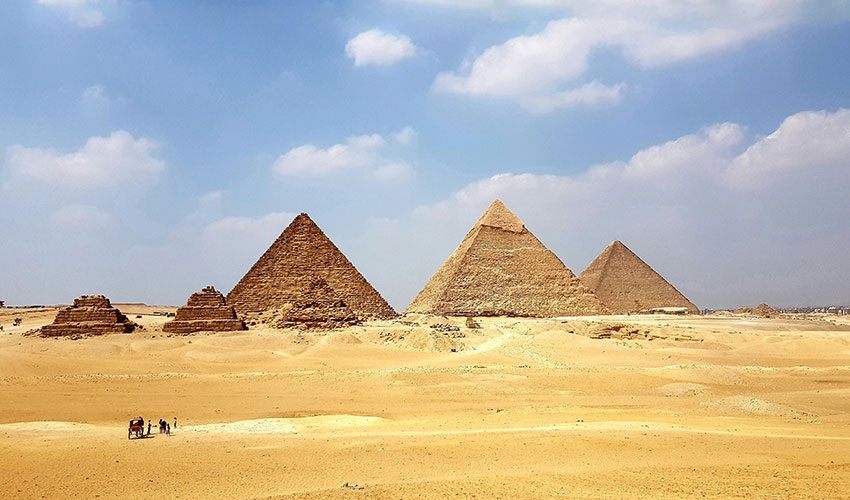
Pyramids of Giza
The Pyramids of Giza, one of the most iconic structures in human history, have long been associated with mysteries and speculations, including their connection to sacred geometry. Here's a look at some of the connections people have drawn between the Pyramids of Giza and sacred geometry:
Golden Ratio
One of the most famous aspects of sacred geometry is the golden ratio (approximately 1.618), also known as Phi. Some theorists argue that the proportions of the Great Pyramid of Giza adhere closely to the golden ratio. Specifically, the ratio of the pyramid's height to half its base's length is said to be close to Phi. However, there is debate among historians and mathematicians (of course) about the accuracy of these claims.
Alignment
The Pyramids of Giza are aligned with remarkable precision with the cardinal points of the compass. The sides of the Great Pyramid are aligned almost exactly with the four cardinal directions: north, south, east, and west. Some proponents of sacred geometry argue that this alignment was intentional and holds symbolic significance related to cosmic order and harmony.
Numerology
Sacred geometry often involves assigning mystical significance to certain numbers. The dimensions of the pyramids and the proportions of their various components have been analysed by some enthusiasts in terms of numerology, seeking patterns and meanings in the numbers associated with these structures.
Relationship to other Geometric Shapes
The Pyramids of Giza are essentially geometric shapes themselves—square bases with four triangular sides rising to a point. Some interpretations within sacred geometry may see these shapes as holding inherent spiritual or cosmic significance.
Cosmic Connection
Sacred geometry often explores the relationship between geometric forms and the natural world or the cosmos. Some theorists suggest that the layout and dimensions of the pyramids were designed to reflect cosmic principles or align with celestial bodies.
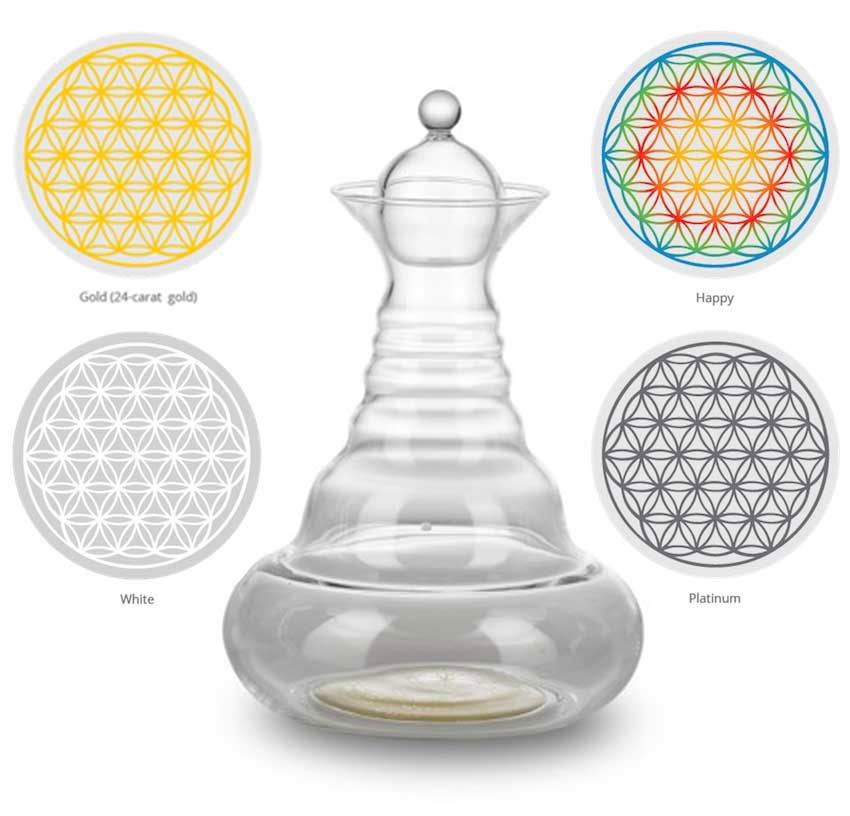
Sacred Geometry Vessels
Sacred geometry vessels are containers imbued with symbolic patterns and shapes representing the fundamental principles of creation and existence. Speaking into such vessels is a ritualistic practice that harnesses the energy of these symbols to amplify intentions, prayers, or messages. As you speak into the vessel, imagine your words weaving through the intricate geometric patterns, resonating with the inherent harmony and balance encoded within. Your intentions are amplified and guided by the sacred geometry, aligning them with the natural order of the universe. If you’re interested in these vessels, we do sell a range of Flower of Life products which you can see some of here.
Whether you seek guidance, healing, or simply wish to communicate with higher realms, speaking into these vessels can serve as a powerful conduit for your intentions to manifest and resonate throughout the cosmos. As we trace the lines and shapes that adorn their surfaces, we enter into a state of resonance with the universal rhythms, attuning our consciousness to the divine harmony that surrounds us. In the stillness of our sacred geometry vessels, we find refuge from the chaos of the world, a sanctuary where we can reconnect with the essence of our being. Here, amidst the sacred symbols and geometric forms, we are reminded of our inherent connection to the cosmos, the oneness of all existence, and the infinite possibilities that lie within us.
In the sacred geometry vessels, we discover the alchemical process of transformation, where the raw materials of our experiences are transmuted into the golden essence of spiritual wisdom. Through the sacred symbols and geometric patterns that adorn their surfaces, we find the keys to unlocking our true potential and awakening to our highest selves. So let us gather around these vessels, with reverence and gratitude in our hearts, as we embark on a journey of self-discovery and spiritual evolution. Together, let us drink deeply from the wellspring of cosmic wisdom that flows within, and may our souls be nourished and uplifted by the sacred geometry vessels that guide us on our path.
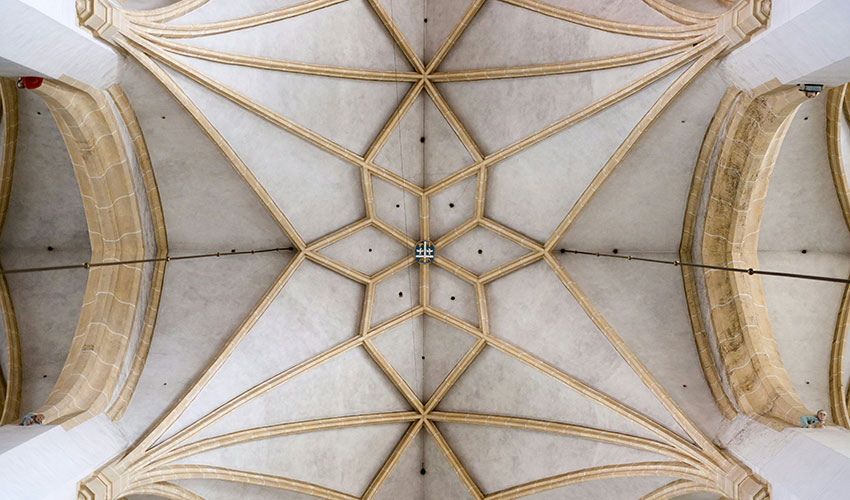
The Flower of Life stands as a timeless symbol of beauty, unity, and creation, transcending cultural boundaries and spanning the ages. Its intricate patterns and profound symbolism continue to inspire wonder and fascination, inviting us to contemplate the mysteries of the universe and our place within it. As we gaze upon the delicate petals of the Flower of Life, let us remember the interconnectedness of all things, the inherent order of the cosmos, and the boundless potential that lies within each of us. In its timeless symmetry, we find not only a reflection of the divine but also a roadmap to inner transformation, spiritual awakening, and the realisation of our true purpose in life. Order the "Aladdin" Flower of Life Carafe today!











